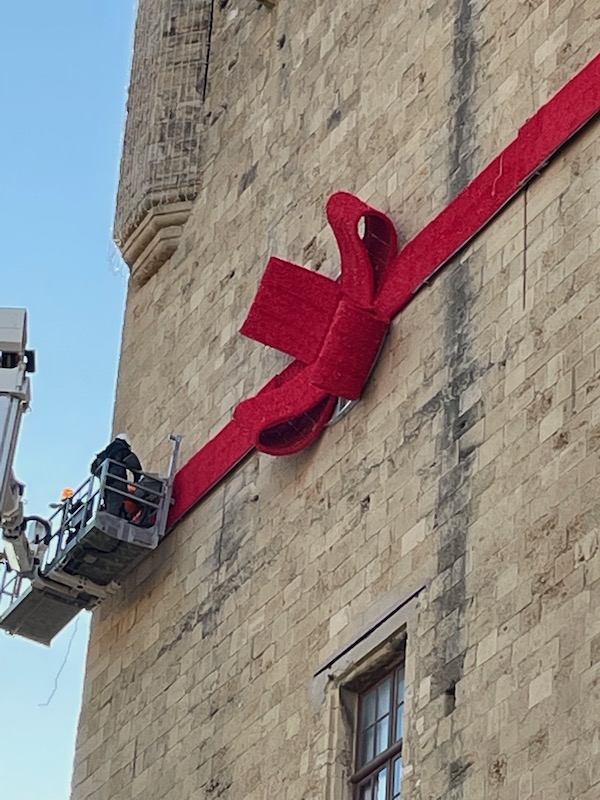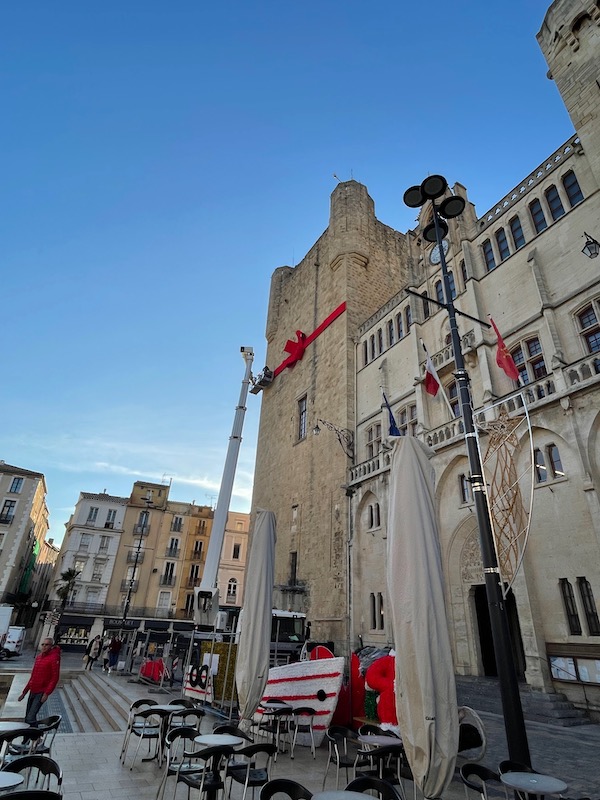Our Blog - Narbonne, France
I had heard some less-than-glowing things about the city of Narbonne, and so we hadn't visited there until this year. We have a friend that we meet up with in the park with her French Bulldog (Rosalie) and she mentioned how they had done a lot of improvements to the downtown area, and she recommended a restaurant that she had taken her father to a few weeks before. So we decided to go ahead and check it out. It is located about 9 miles from the shores of the Mediterranean Sea and was historically a prosperous port, but declined from the 14th century following a change in the course of the Aude river.
The history of the city goes back to the Roman Republic, which established the city in 118 BC under the name Colonia Narbo Martius, Narbo for short. It was located on the Via Domitia, the first Roman road in Gaul which connected Italy to Spain. It has changed hands many times ... Romans, Visigoths, Arabs, Carolingians, and Capets. With the exception of a few years, the population has continued to increase since the 1800's.
Here is an old map of the city, which shows the former fortifications. They were demolished between 1868 and 1884 when the city was cramped inside of the walls.
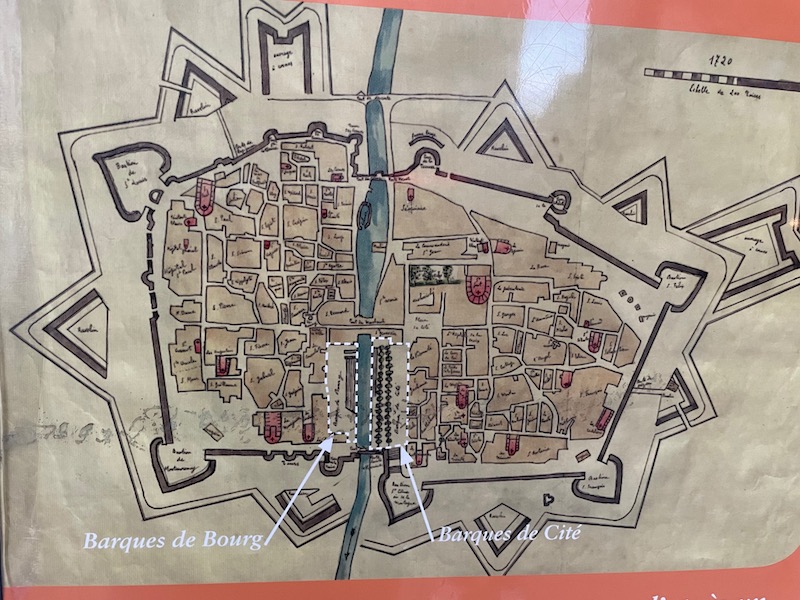
The market halles were opened in 1901 and is designed in the Baltard style, like many market buildings in France. Walking around, you can truly appreciate the Belle Époque structure with wrought iron and tiles.
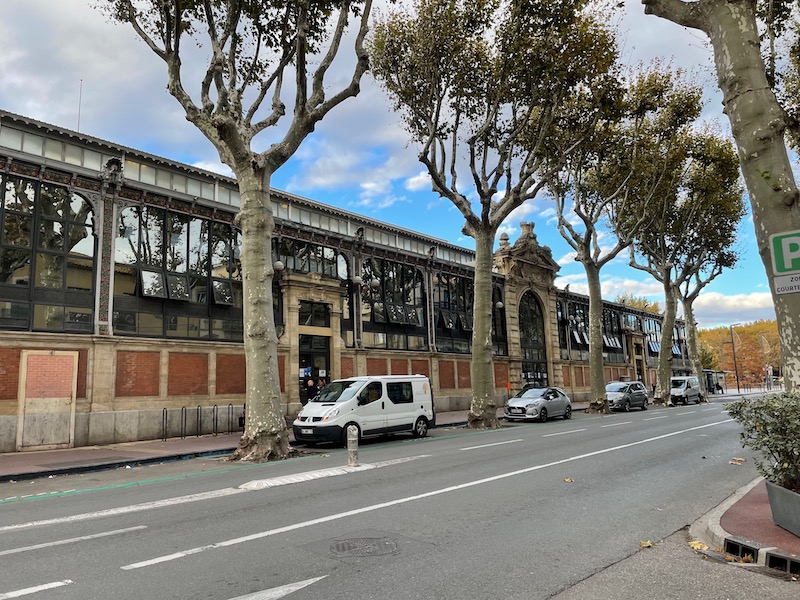
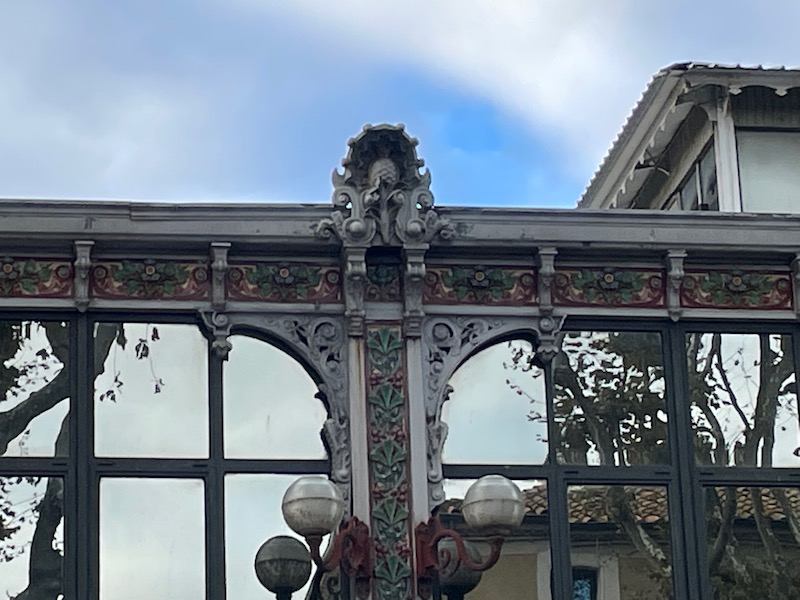
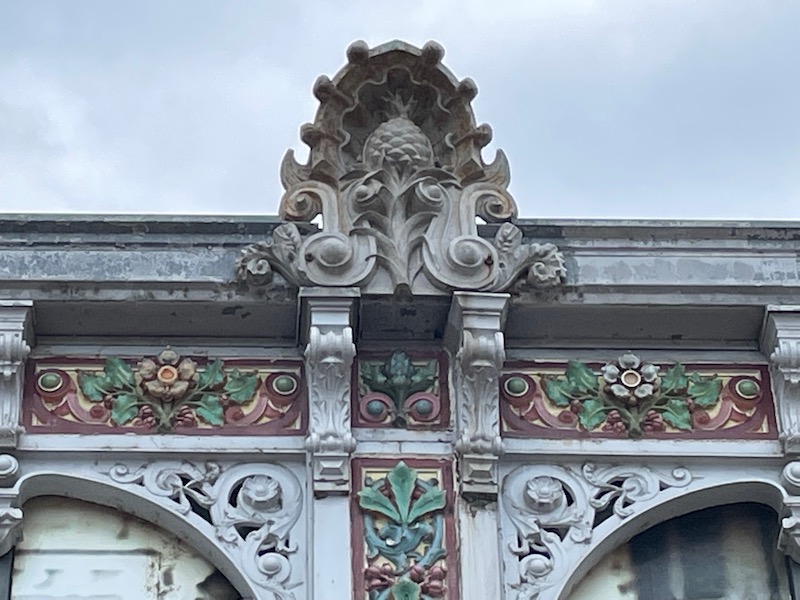
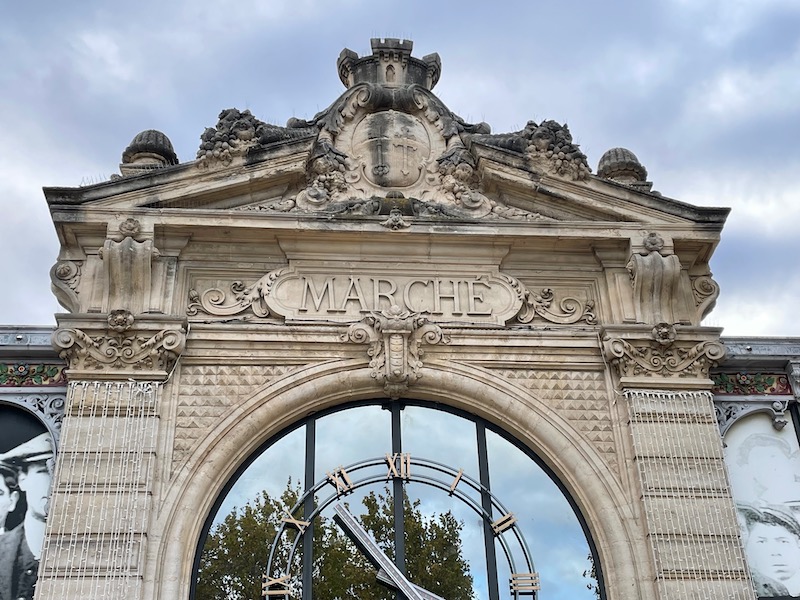
Unique and incredibly aesthetically pleasing, the Pont des Marchands is literally translated in English as the ‘Merchants’ Bridge’. Located in the very middle of the old town, there has been a bridge on site in some form or another since antiquity.
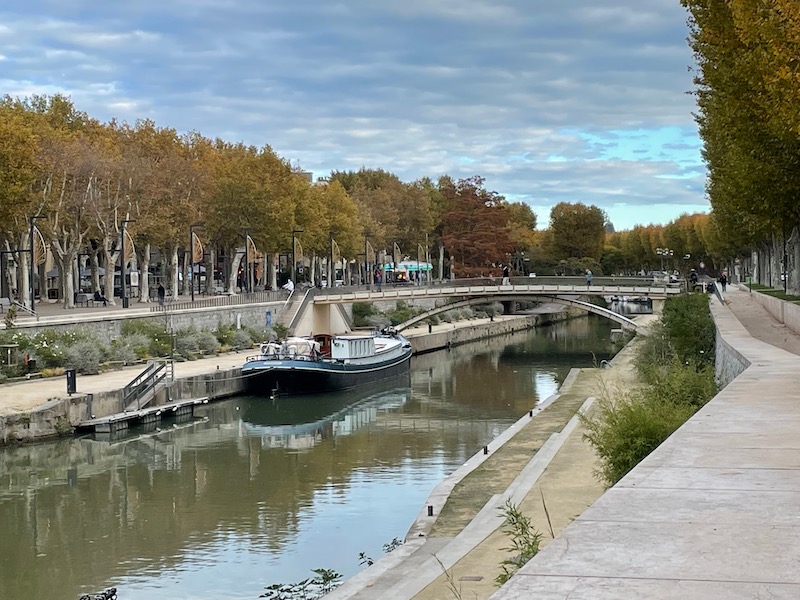
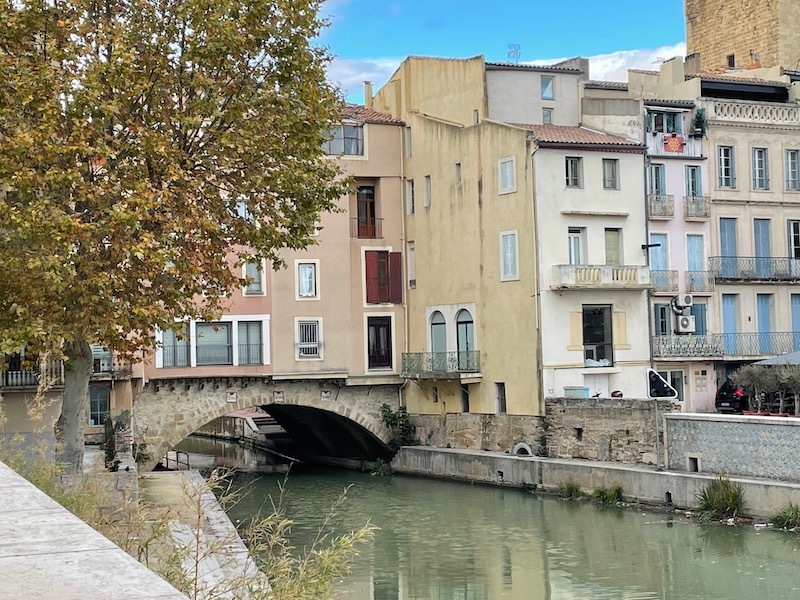
Near the Pont des Marchands is the Place of the 4 Fountains. This is right in the middle of the old sector of town and the area was renovated in the 70's. The fountain has four mouths, and you can see the Christmas decorations.
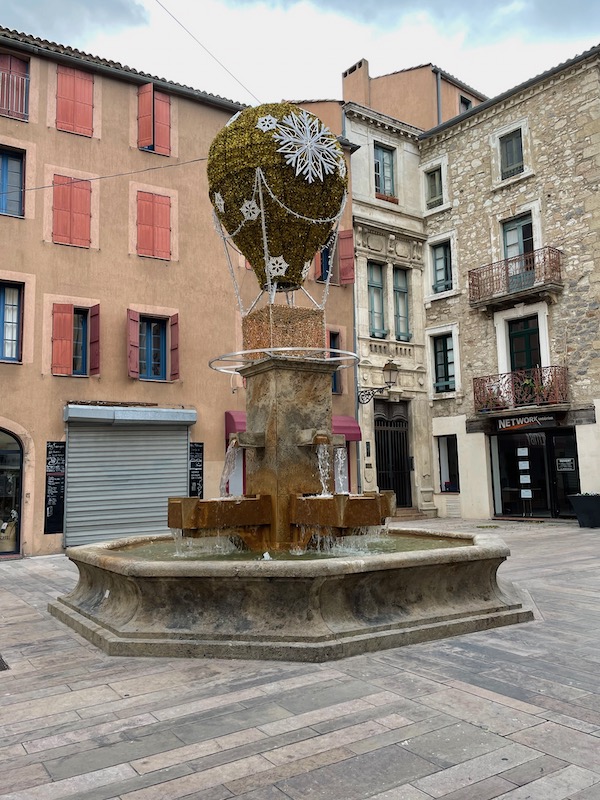
The "Aux dames de France" department store chain was founded in 1898 and the remaining stores were bought by Galeries Lafayette group in 1985. Across France, there are several of the original buildings that are historical monuments and have the brand name still visible. This one dates from 1905 and is right on the main square, across from the Bishops Palace. An interesting thing is that this first picture really shows the difference once the buildings are cleaned (compare the left 2/3 with the right 1/3, you can see the difference).
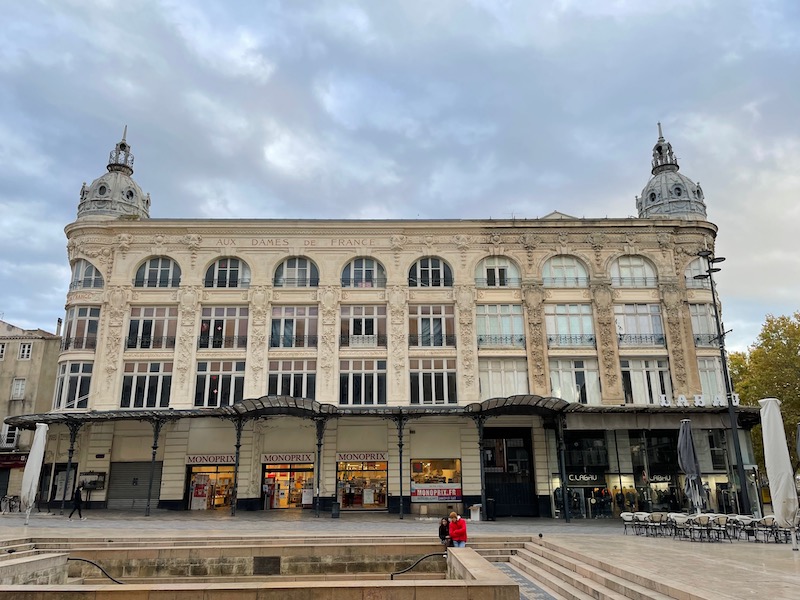
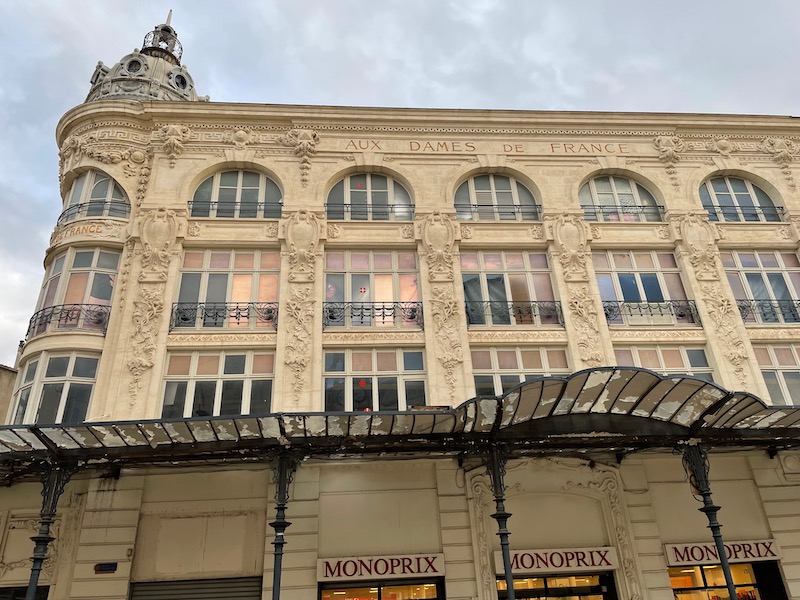
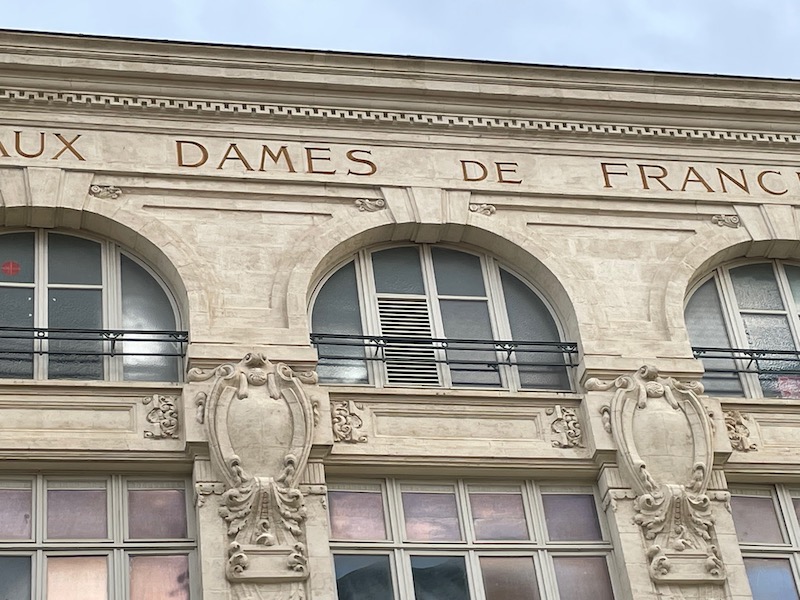
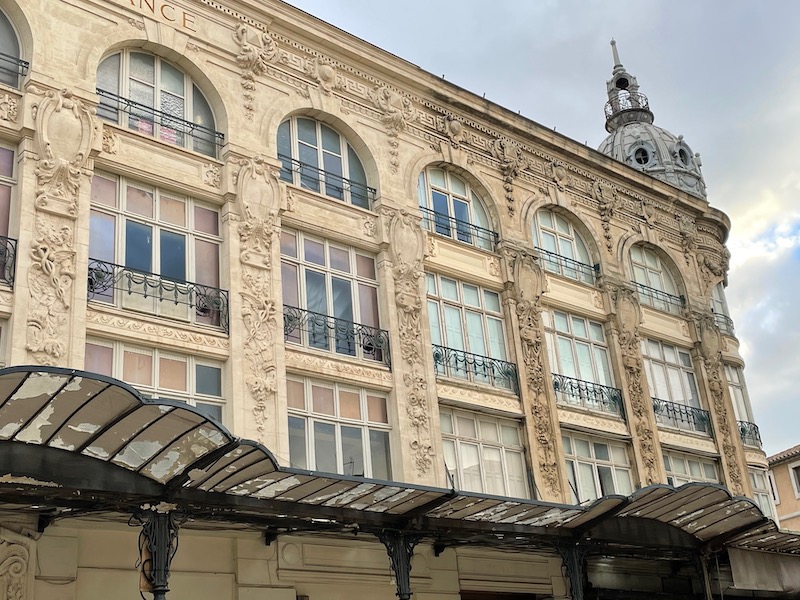
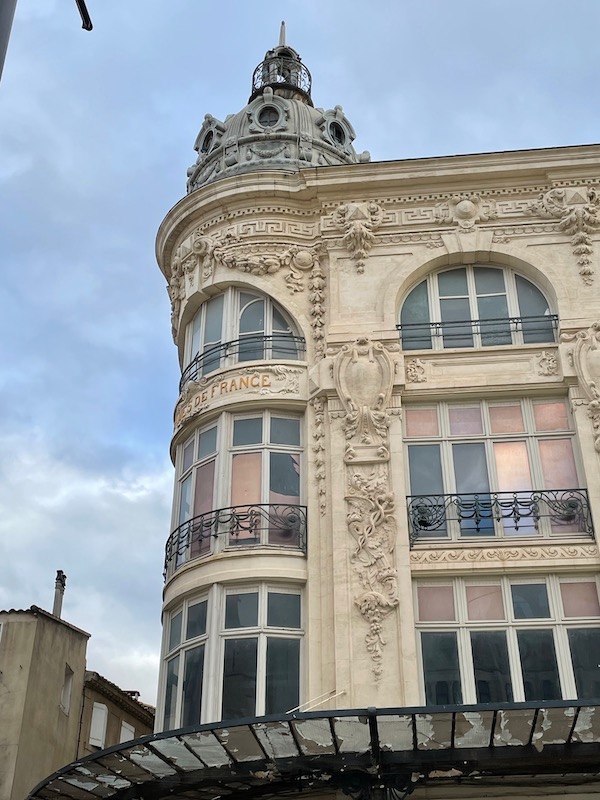
The former palace for the archbishops is built in the Gothic and Romanesque styles. It has various exhibits inside (which we didn't visit) and the tall Donjon Gilles Aycelin tower, that you can climb to get great views over the center of the city (which we also didn't do). There are several buildings which perform various functions. There’s the 19th-century town hall, the Museum of Art located within the archbishops’ former apartments, as well as the archaeological museum in a wing of the old palace. You can look through the pictures and see the various styles that were popular at the time when each building or wing was added. The donjon tower is the oldest part, dating all the way back to the 13th-century. Crowned with turrets, this square tower was built between 1295 and 1306 by Archbishop Gilles Aycelin the southeast corner of the Palazzo Nuovo.
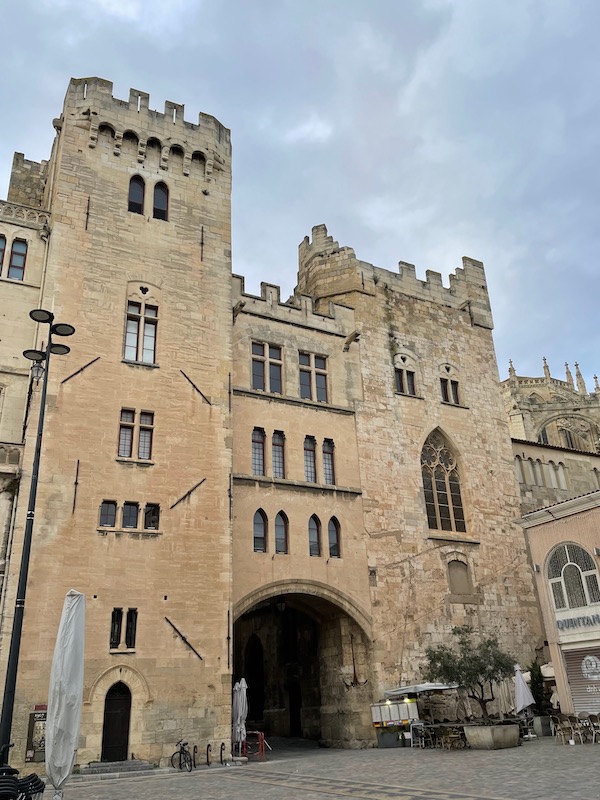
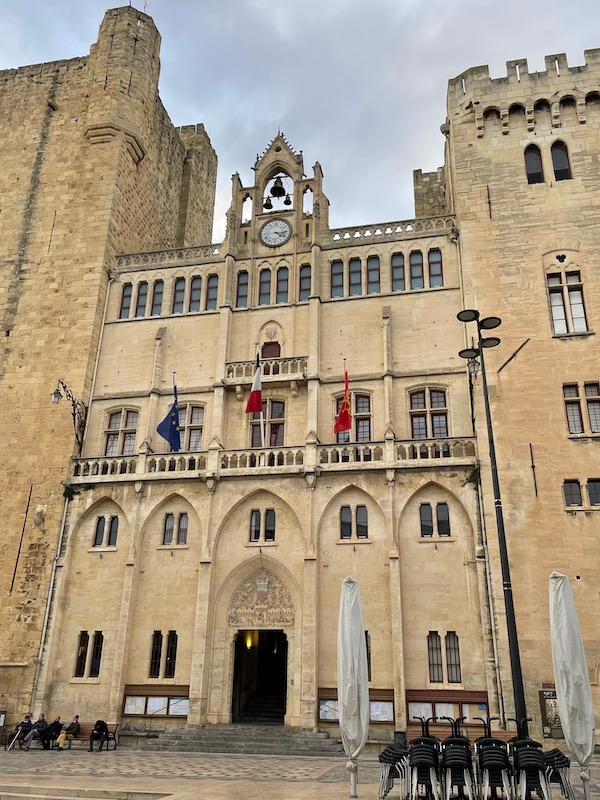
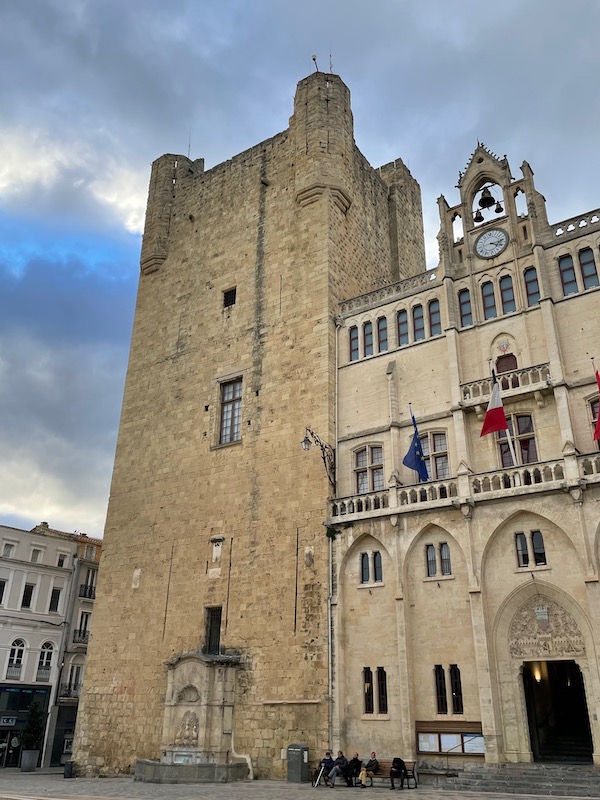
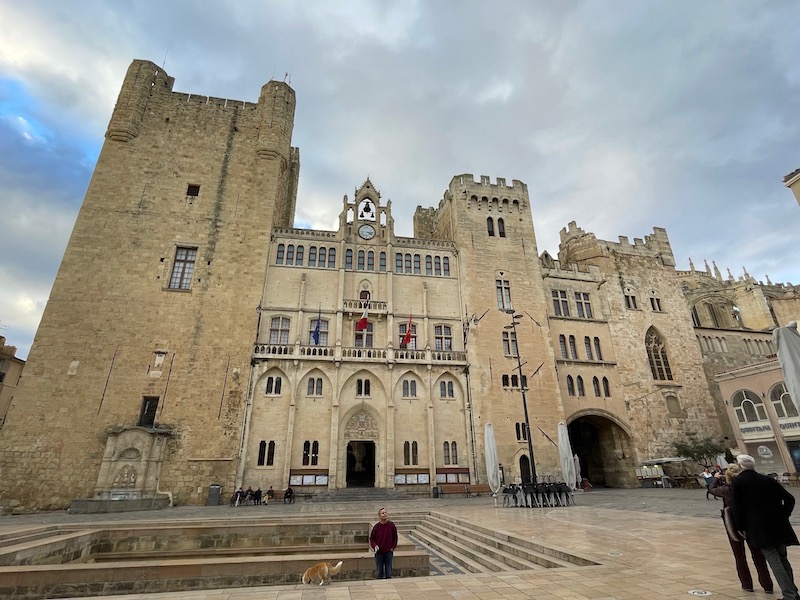
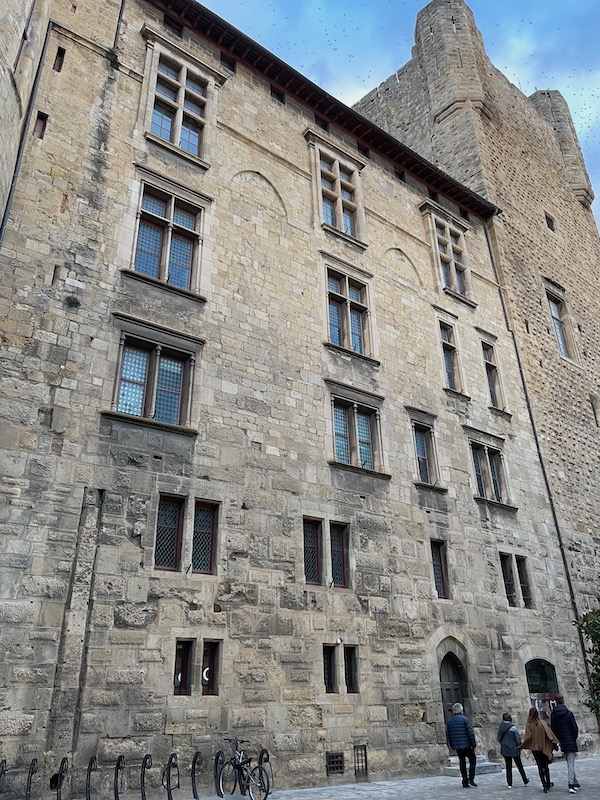
There was a really nice bas relief and coat of arms of the city of Narbonne as well as a nice fountain on the side of the donjon and city hall buildings.
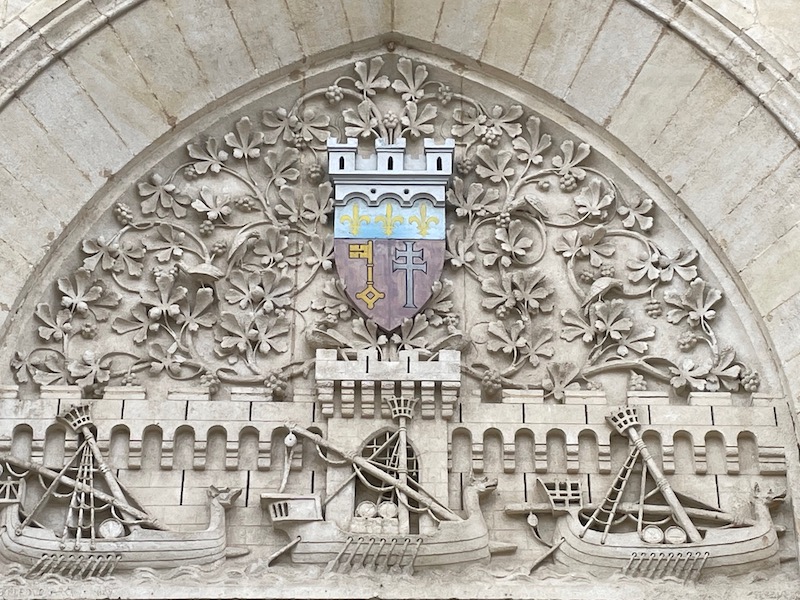
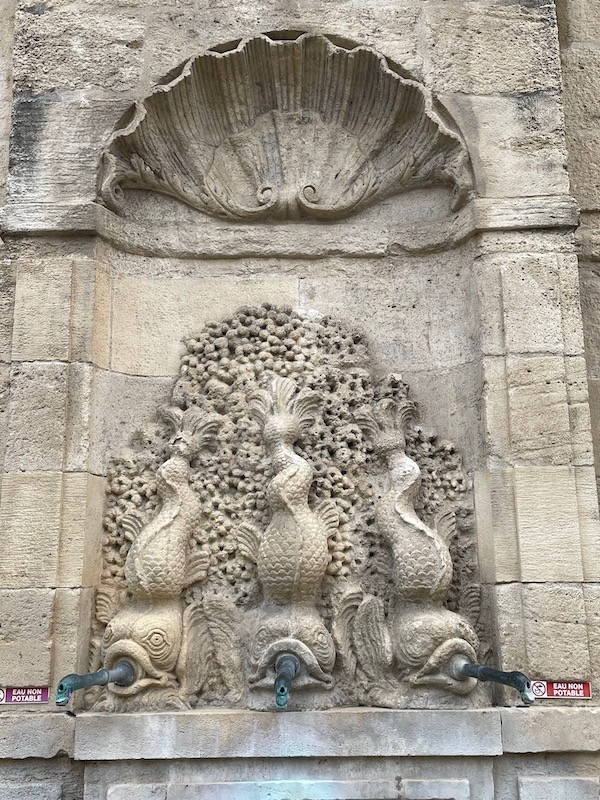
We also grabbed a picture of the main square and archbishops palace at night with all of the lights.
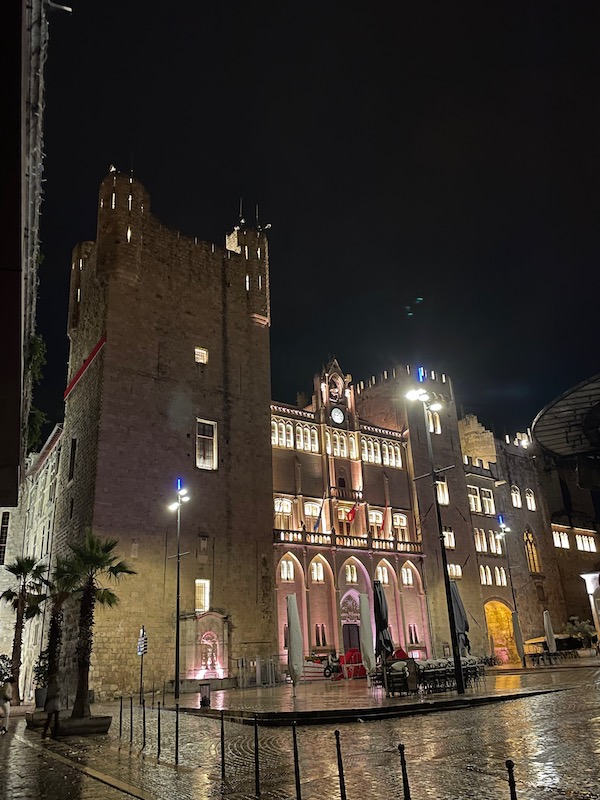
I mentioned that the city dates back to 18 BC, along the Via Domitia Roman road that linked Italy to Spain. Part of this roman road was discovered in 1997 right in the middle of town in front of the archbishops palace and Hotel de Ville.
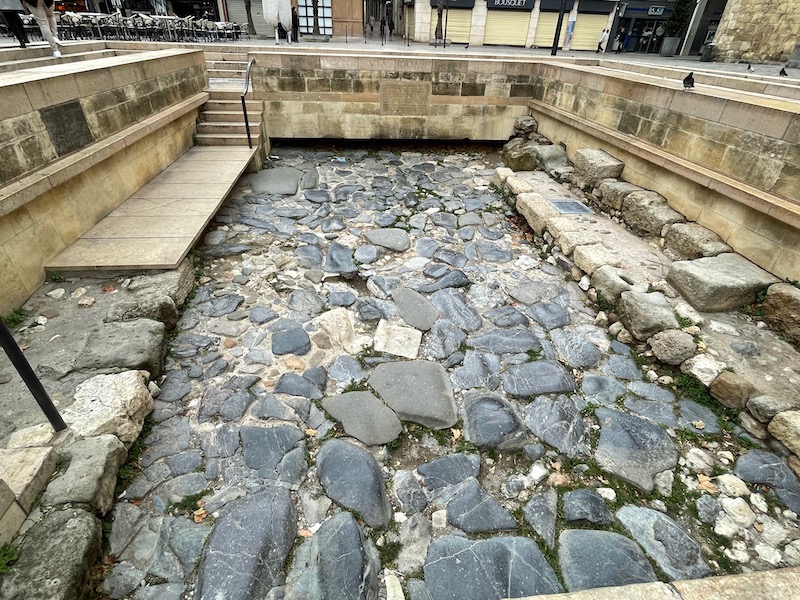
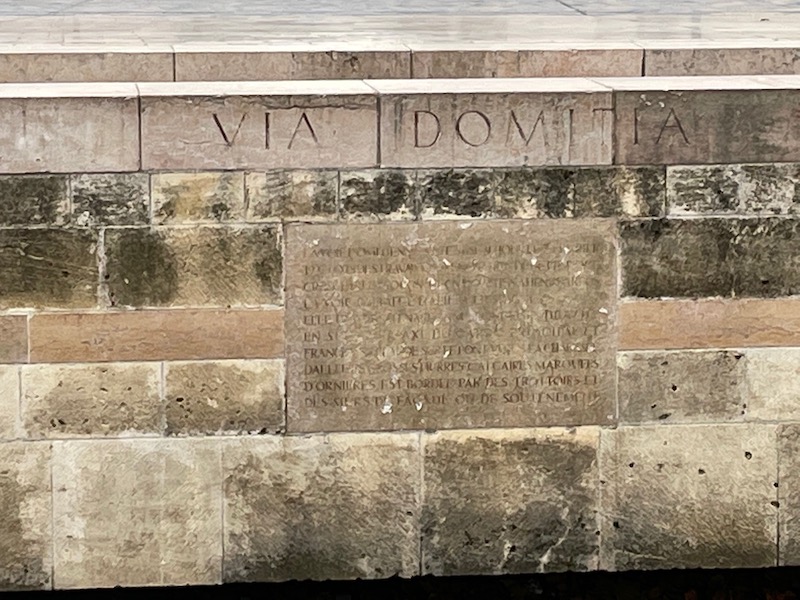
Between the Archbishops Palace and the Cloitre of the cathedral is a narrow roadway. It starts between the 13th century Madeleine Tower and the 14th century Saint Martial Tower and is called the Passage de l'Ancre or the Anchor Passage. This passage marks a separation between two historical parts of the palace: the old 9th-13th century Old Palace and the 14th-18th century New Palace.
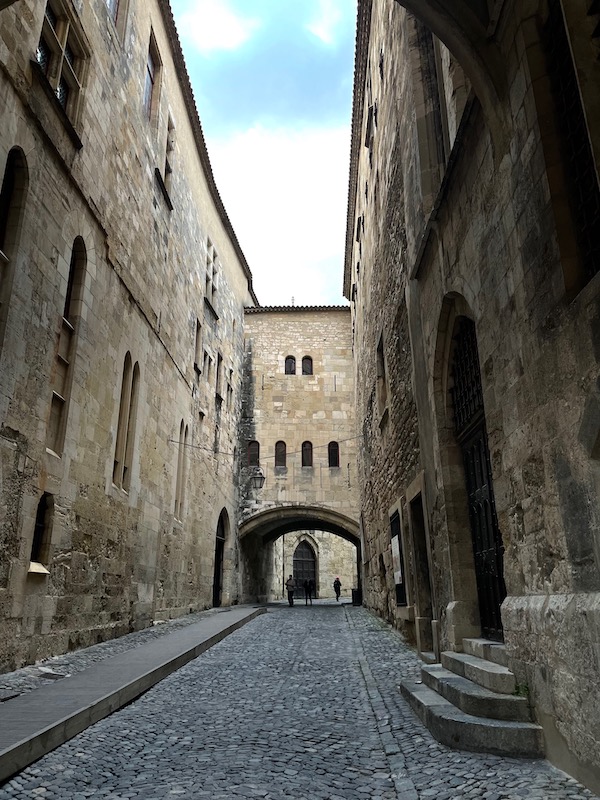
From here, you can enter the courtyard of the archbishops palace and take a peek around. Even here, you can see various different architectural styles. The original Donjon Tower (seen at the top behind the other buildings) is the oldest. Then his successor added the South and East wings up against that old tower. The North and West wings were added in the late 1300's. New façades were added around the New Palace courtyard in a more classical style in the 17th and 18th centuries including the addition of a grand staircase. The last major change came in 1845, when Viollet le Duc replaced the East Wing and a wall with a neo-Gothic building that is now the Town Hall.
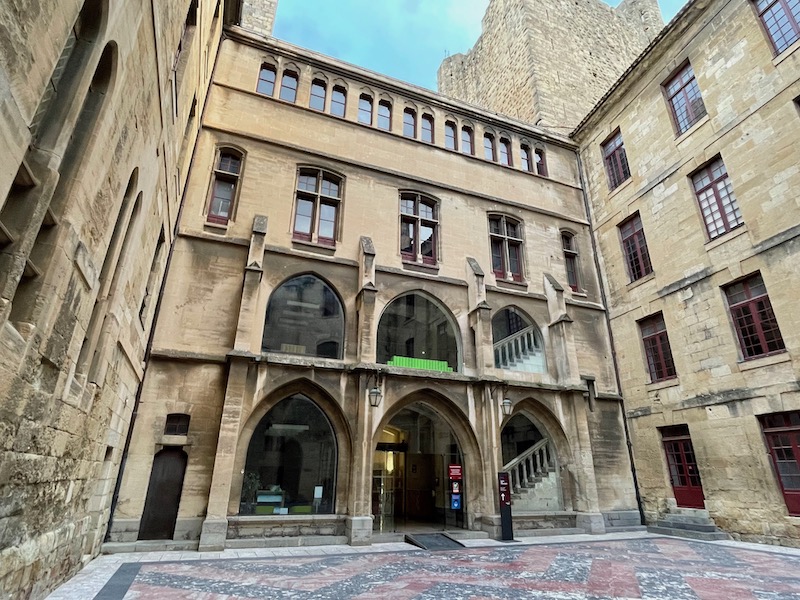
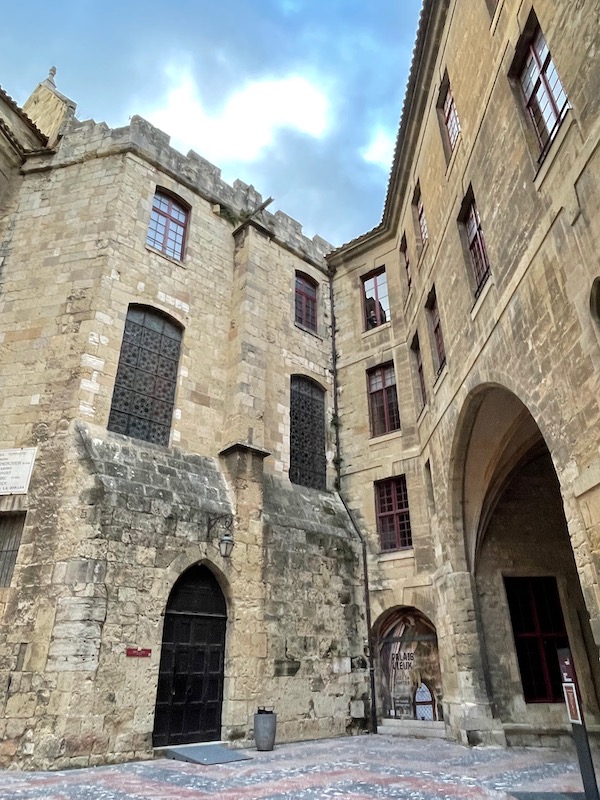
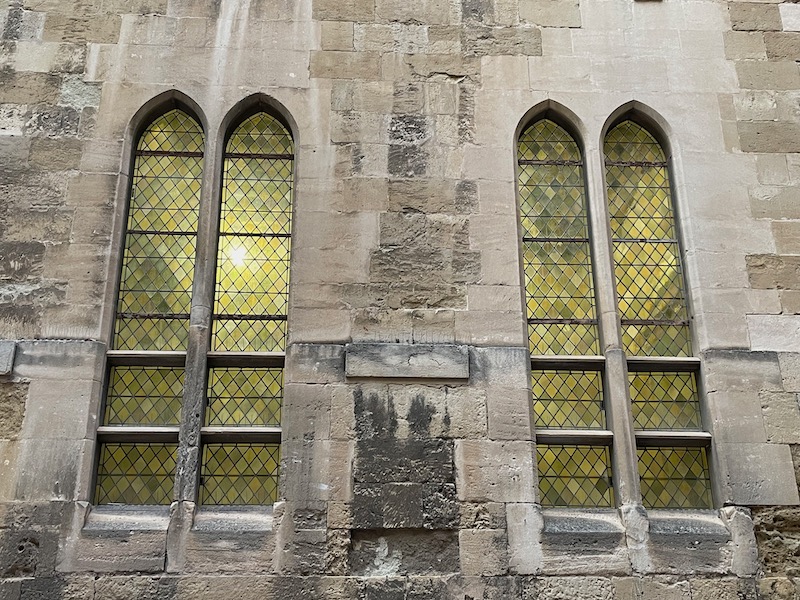
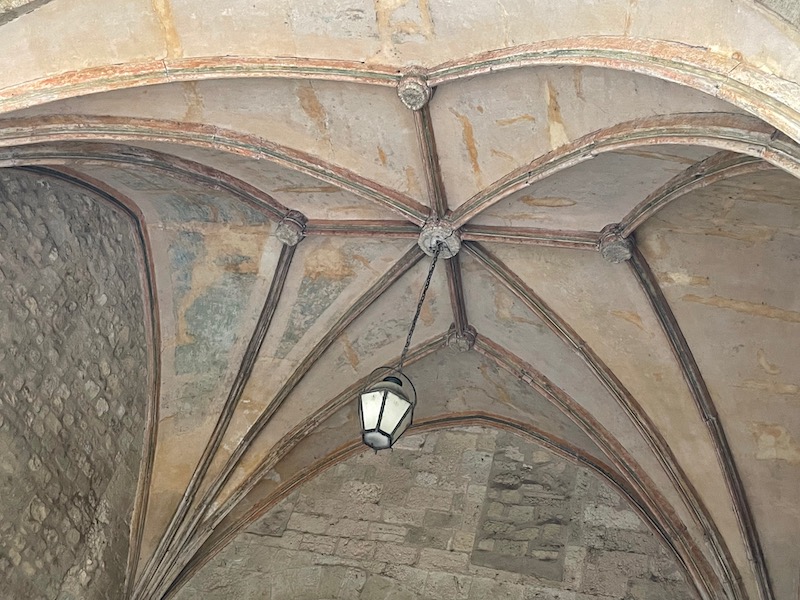
The first basilica was built on this spot in 313, and there have been multiple different churches although almost nothing remains of them. The Narbonne Cathedral, or the Cathédrale Saint-Just-et-Saint-Pasteur de Narbonne, was started in 1272 and is known for being unfinished ... only the choir has been fully completed. It is the 4th tallest cathedral in France at 41 meters under the vault and really sticks out as it is a bit disproportional to the size of the city itself. It was started with a grand plan but, due to various circumstances, it was never finished. It is designed in the very typical Southern Gothic style with very elaborate flying buttresses. We first walked around, getting a look at the buttresses, and then the unfinished transept, now called the Saint Eutrope Courtyard. There were supposed to be 5 side-chapels on each side down the nave but only 2 were built.
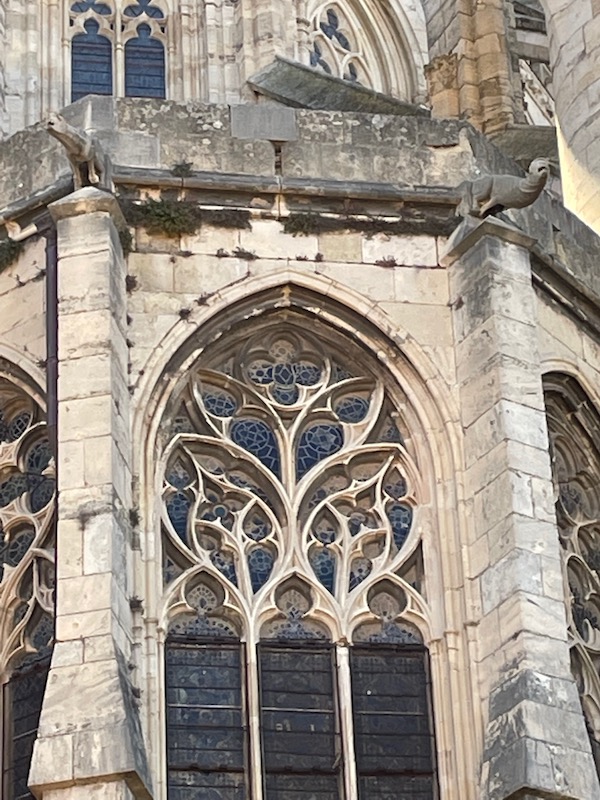
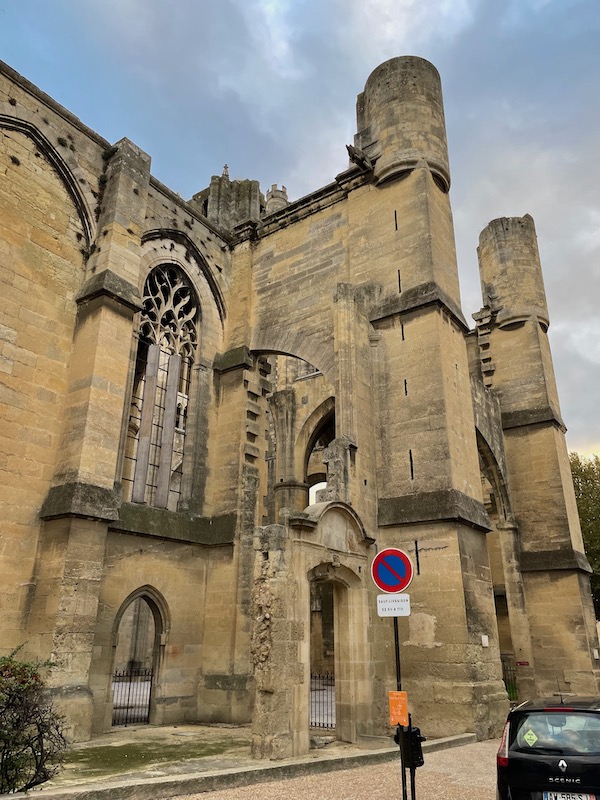
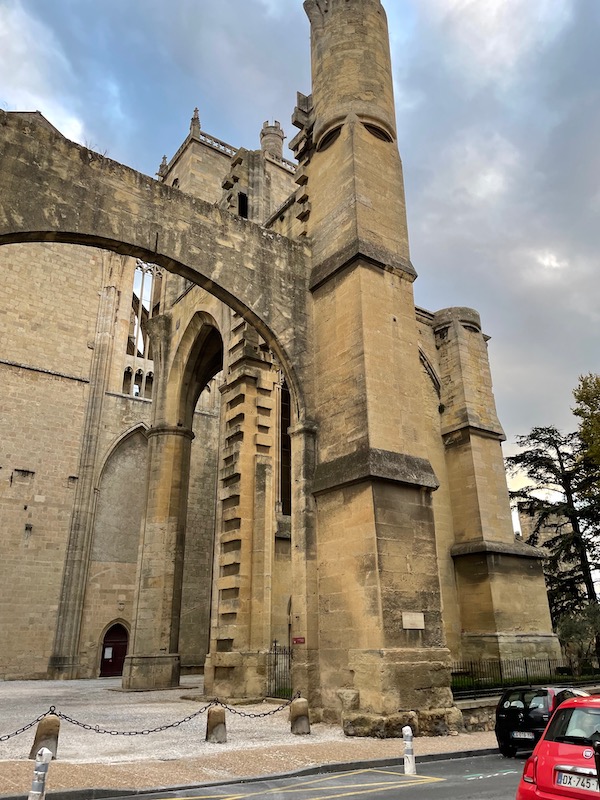
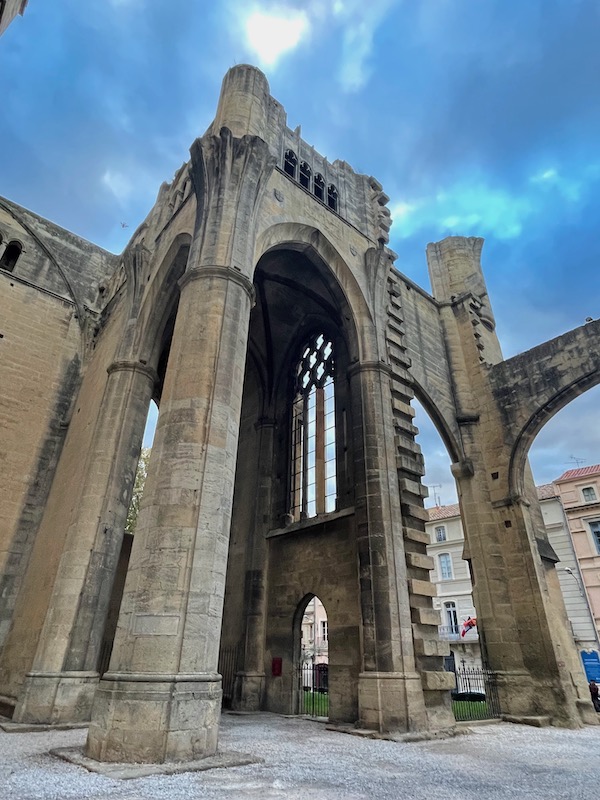
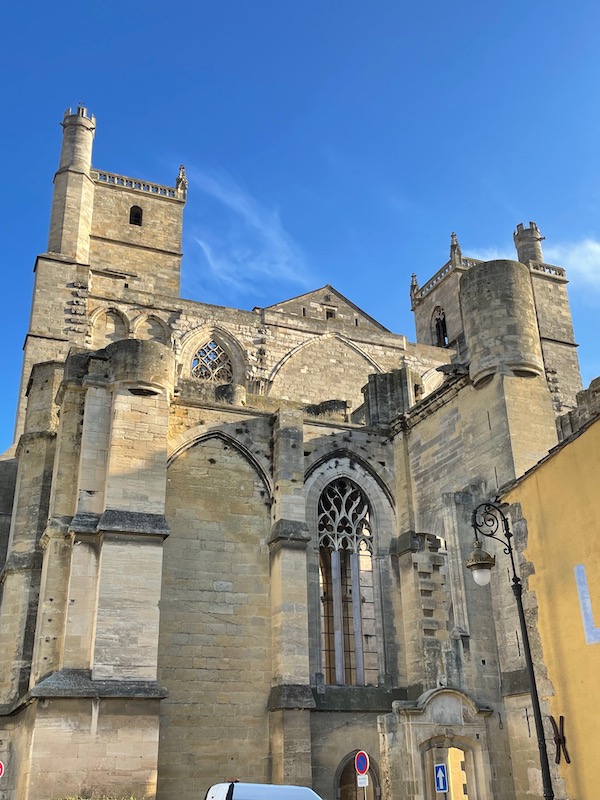
A couple pictures inside of the cloister, with the gothic arches around the garden, with the church in the background.
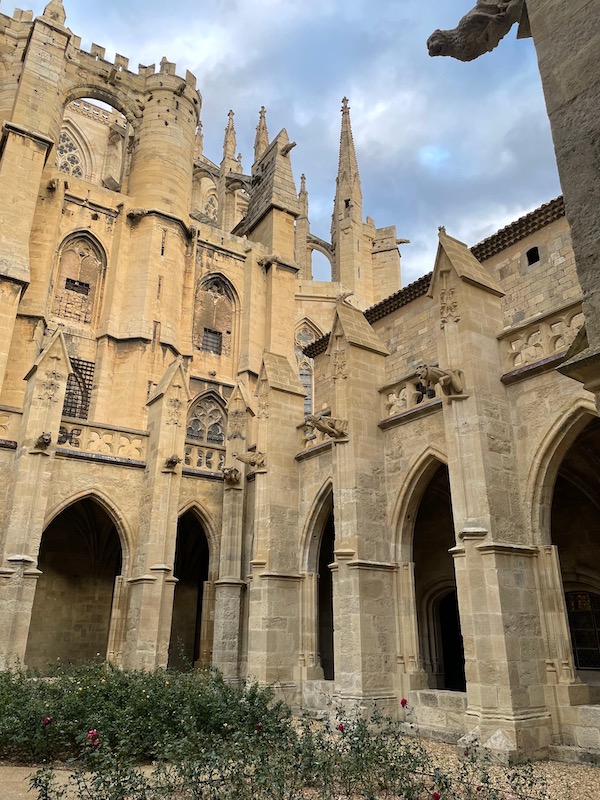
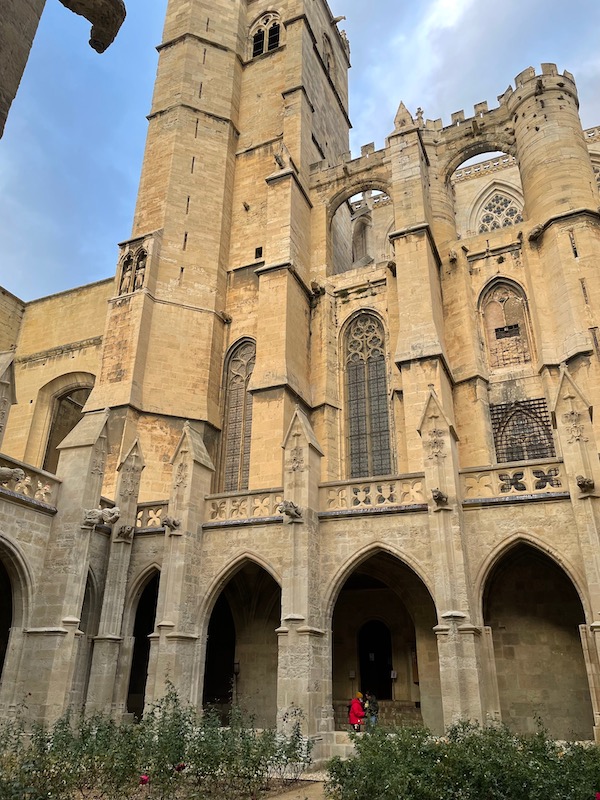
Since only the choir was finished, the normal entrance at the end of the nave isn't there. Instead, they have this little entry here on the side.
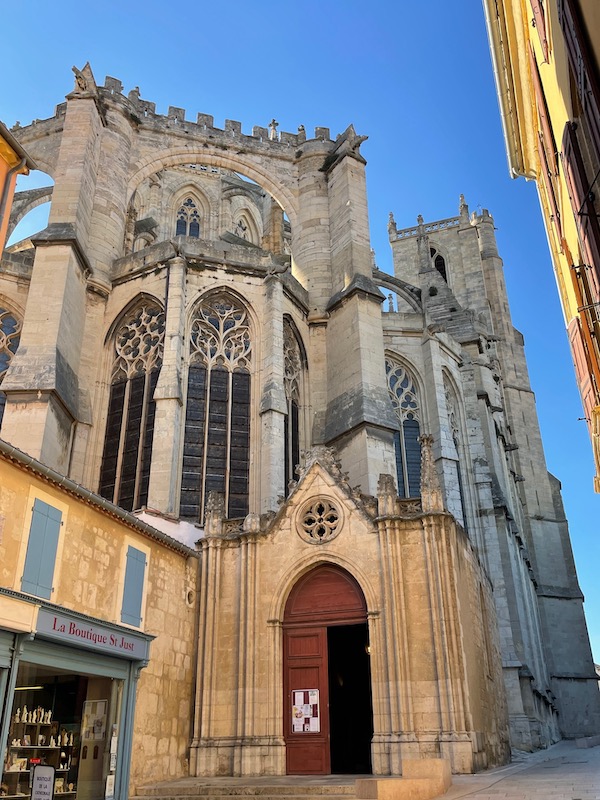
Dogs are not normally allowed in churches in France although we have taken Lucy into a few of them. We took her into this one but were quickly told that Lucy either had to go outside, or we could carry her. She isn't too keen on being carried, but she put up with it while we were inside.

The classical interior has very tall Gothic vaults with tall, narrow stained glass windows.
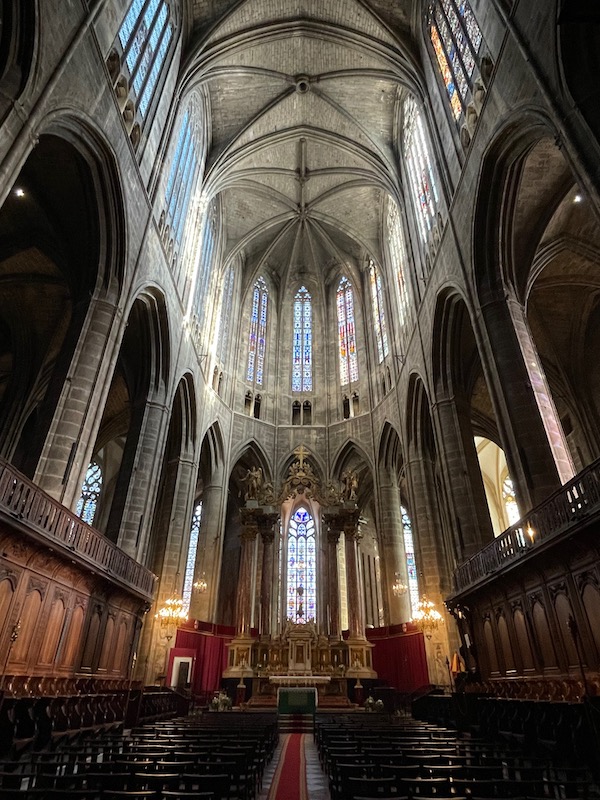
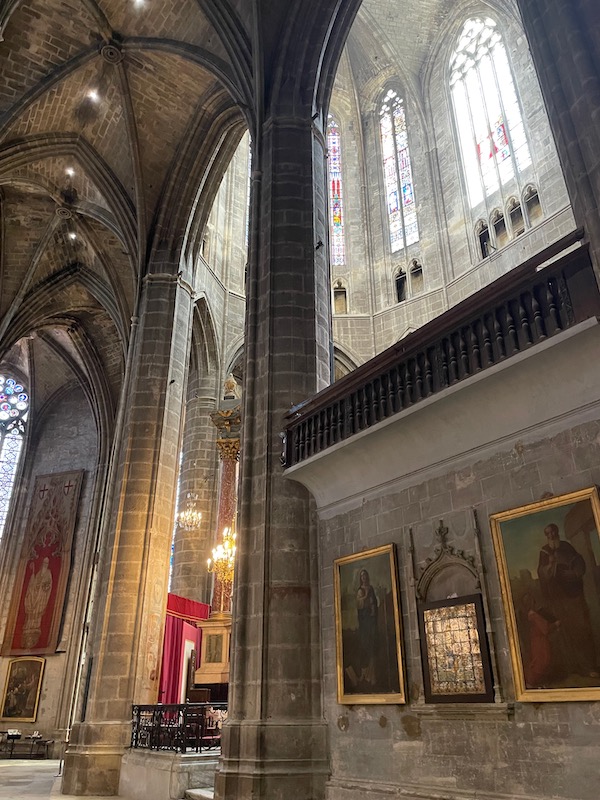
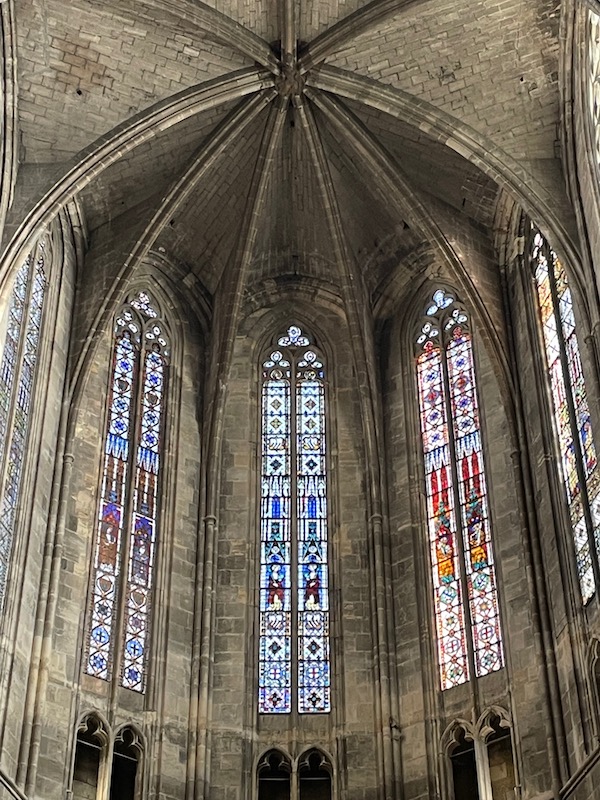
Saint Martin chapel holds the relics of Saint Martin to the left of the altar. The large altarpiece has a painting entitled The Resurrection of Lazarus. On the sides are statues of Saint Augustine and Saint Ambrose.
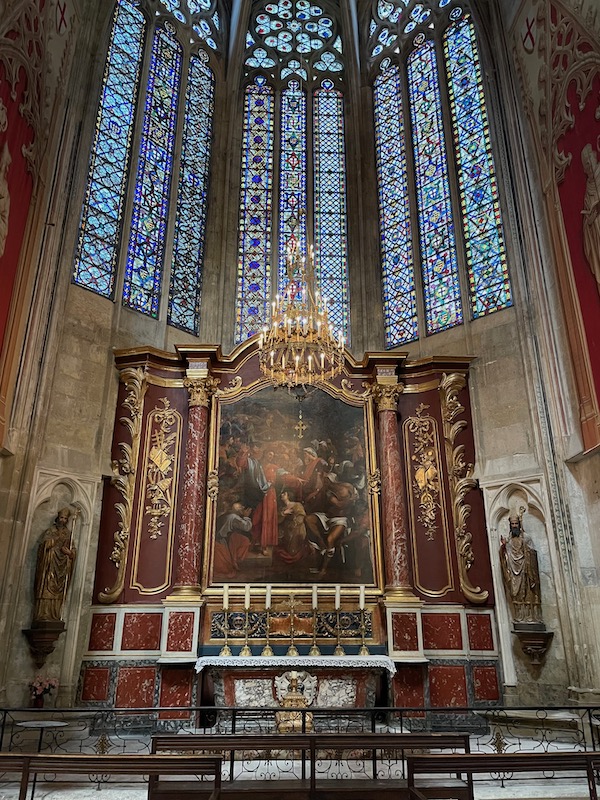
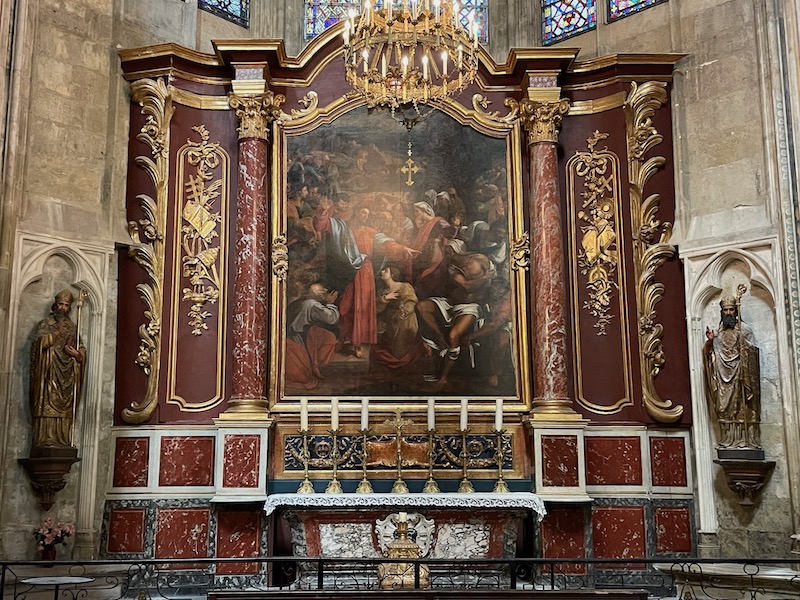
The high altar dates from 1694 to 1695.

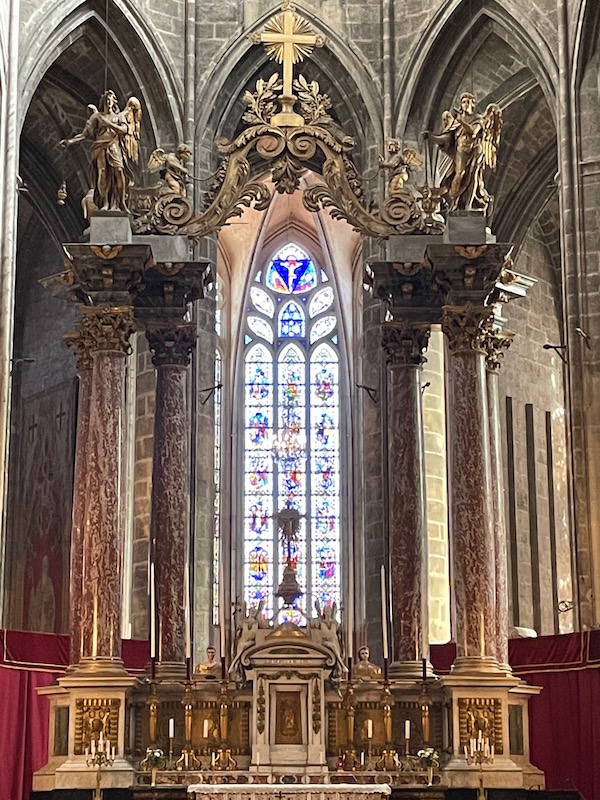
The 18th century organ and its carved wood case is one of the nicest remaining from that period in the various churches in France.
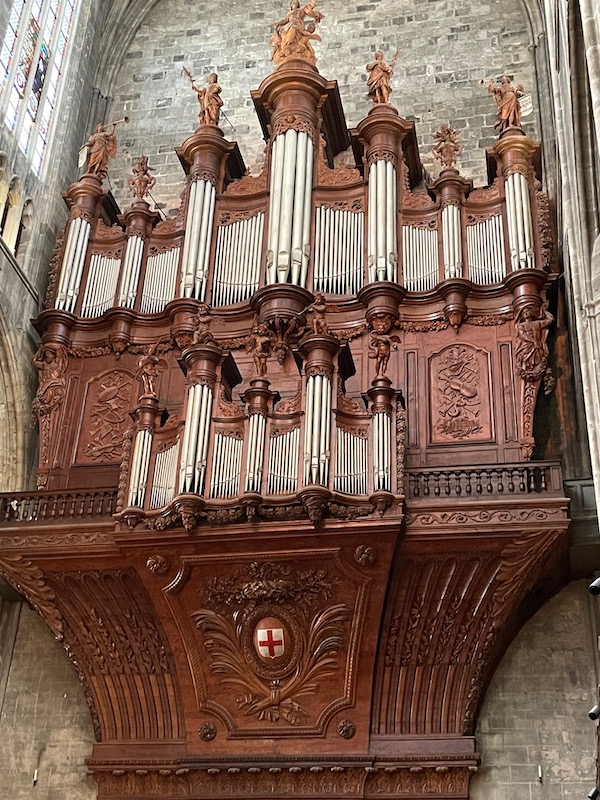
Not the most ornate carved choir stalls that we have seen, but they are still nicely preserved from the 18th century.
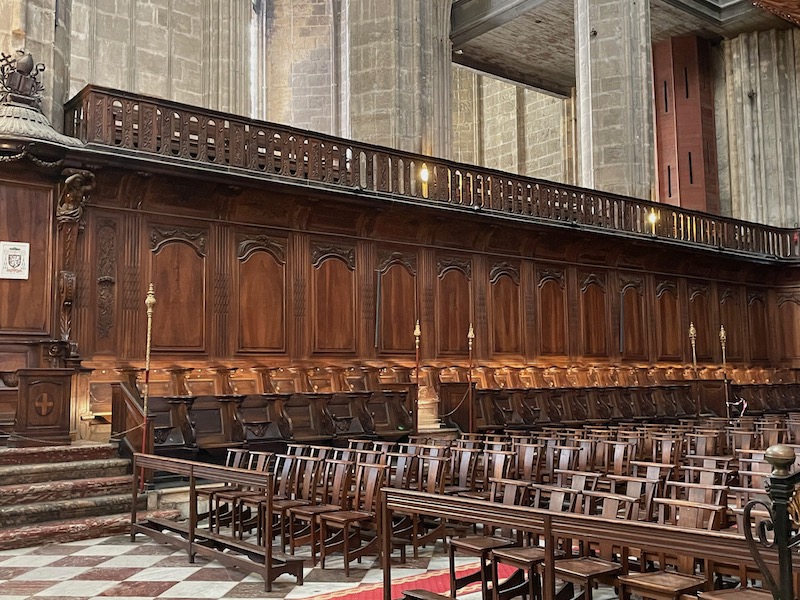
This is a polychrome terracotta sculpture group dating from the first part of the 16h century, entitled "The Entombment".
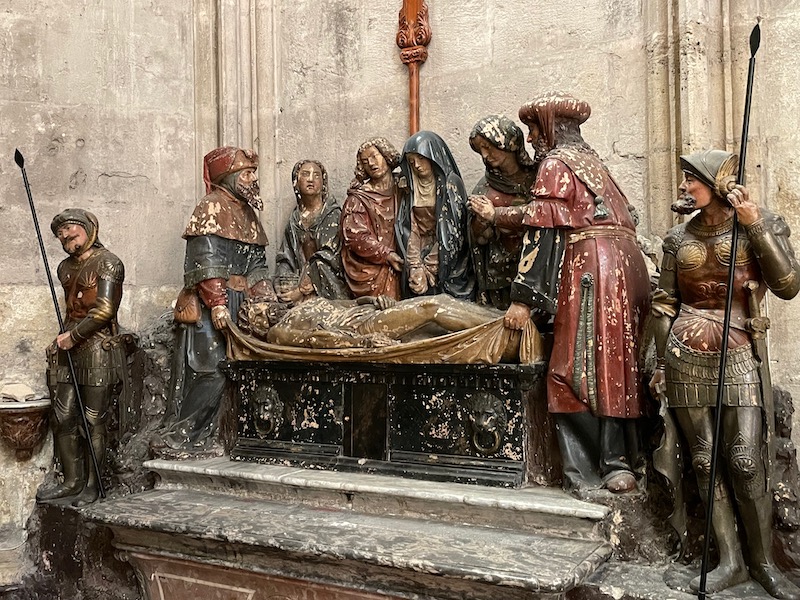
These two tapestries from the late 17th century are hanging in the chapels used as a sacristy. They depict the Queen of Sheba visiting King Solomon and David's defeat of Goliath.
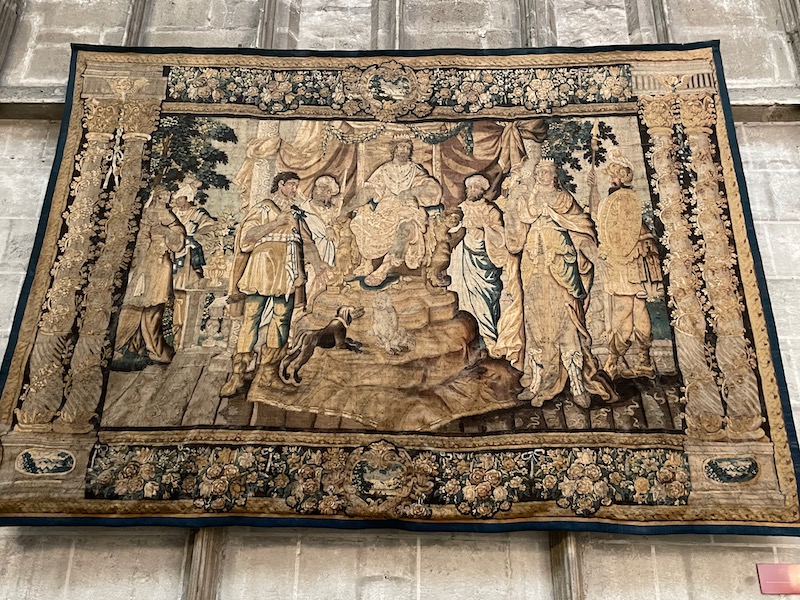
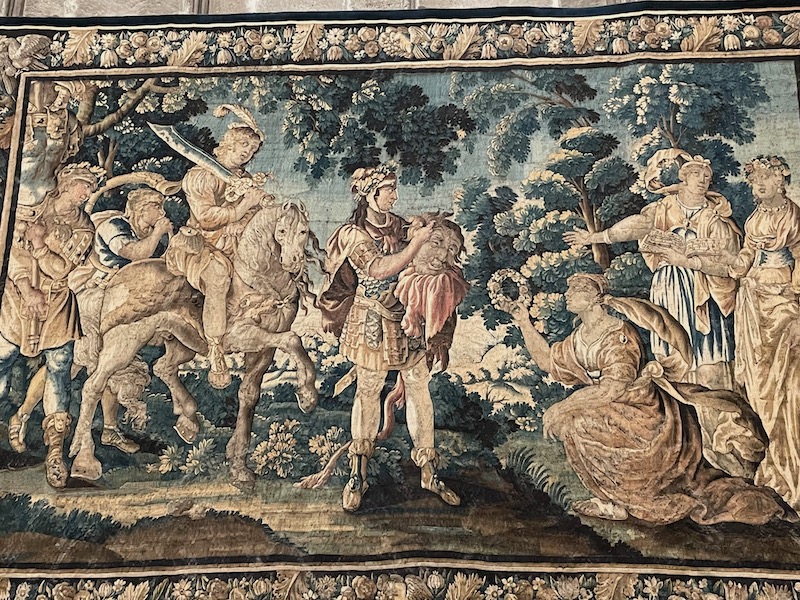
This chapel, the chapel of Our Lady of Bethlehem, looks like it hasn't been touched for years, but in fact, has been somewhat restored. The polychrome stone retable dates from the 13th century and was found broken under a set of 18th century marble panels. There are 3 levels with over 200 characters. The top row has large statues of saints and prophets, then below are scenes of feasts connected to the life of Christ. At the bottom are scenes that depict places where souls go after death: Purgatory, Limbo, Hell, and Paradise. There are two sections and I have included an up-close picture from each one.
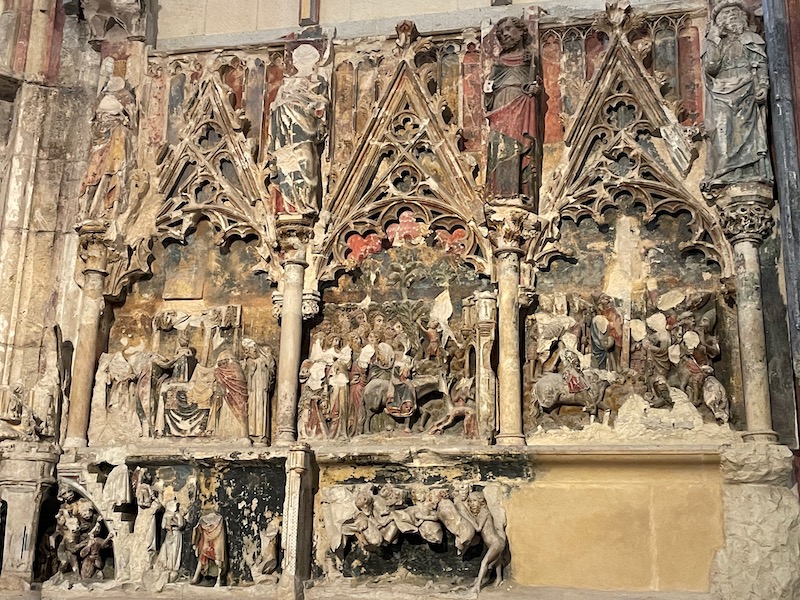
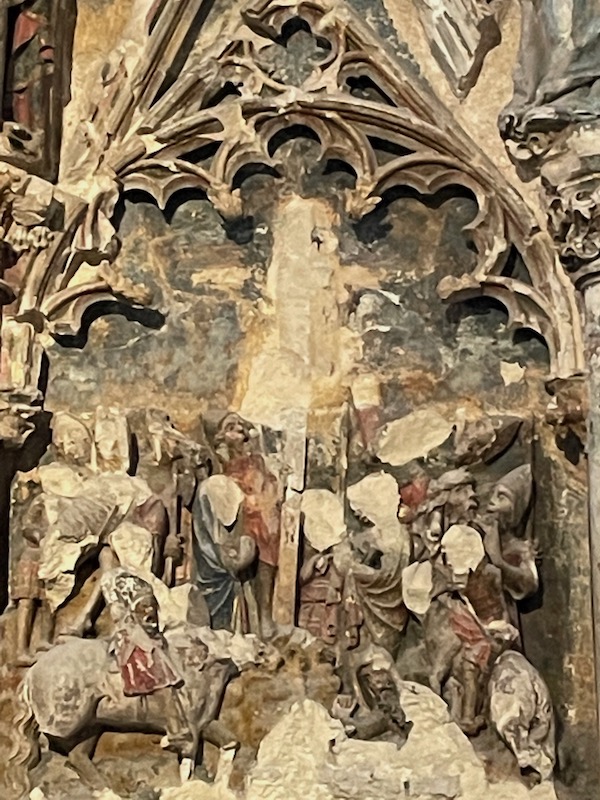
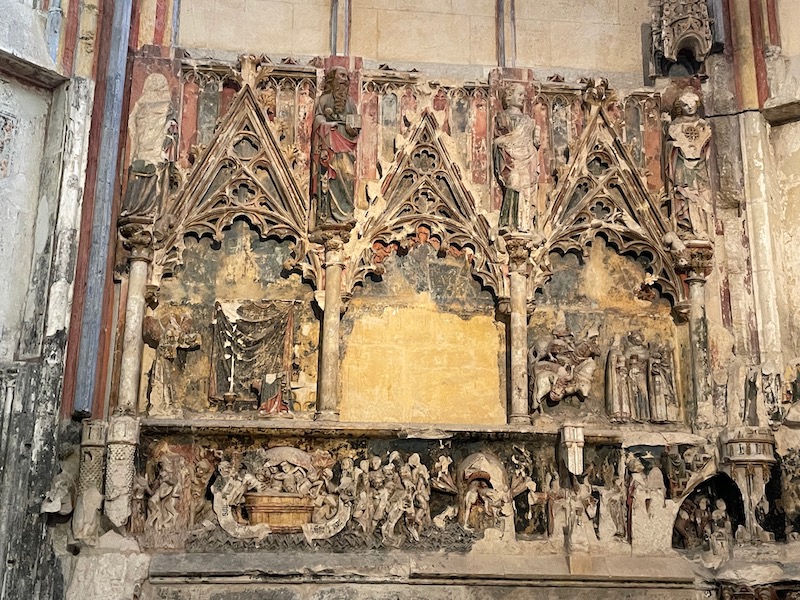
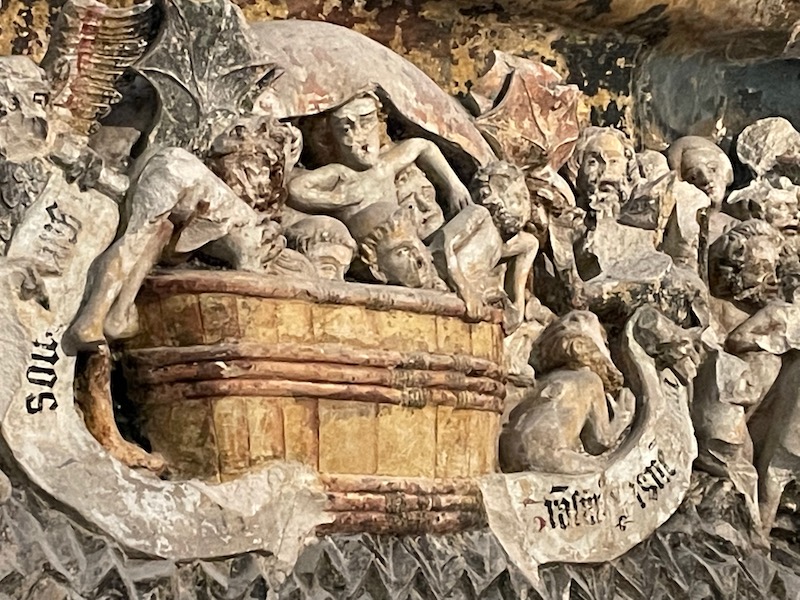
Tomb of the archbishop of Narbonne from 1507-1514, which was erected in 1523. It is made out of white marble underneath the tomb are monks with their heads covered, mourning the loss of the archbishop.
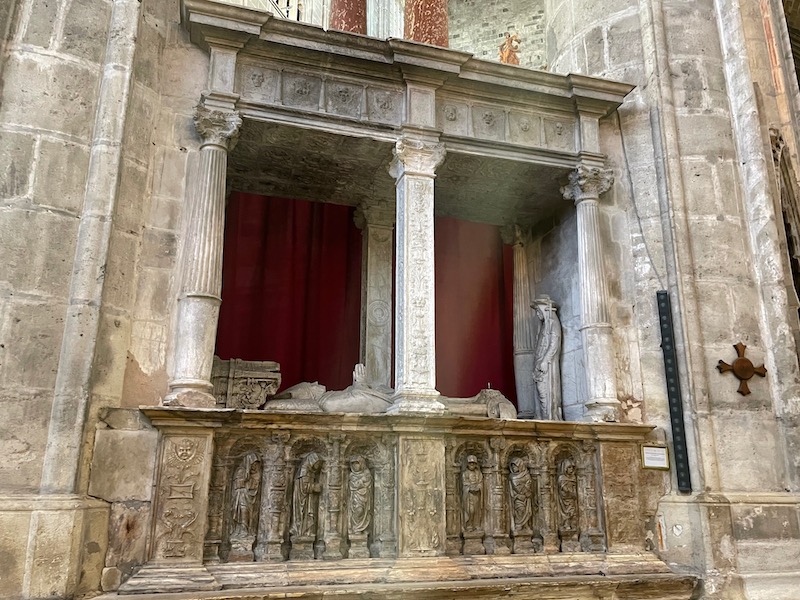
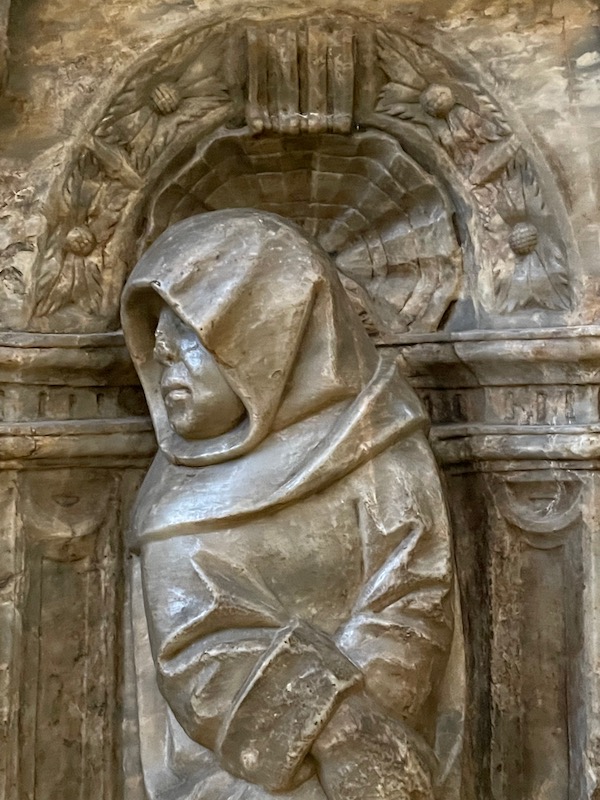
Narbonne hails from Roman times, founded around 100 B.C. The markings of the Roman Empire are worth finding, including the Roman Wolf Sculpture arched above where Rue Droite ends into Place du Forum , and Roman limestone pillars that dates from the 1st century.
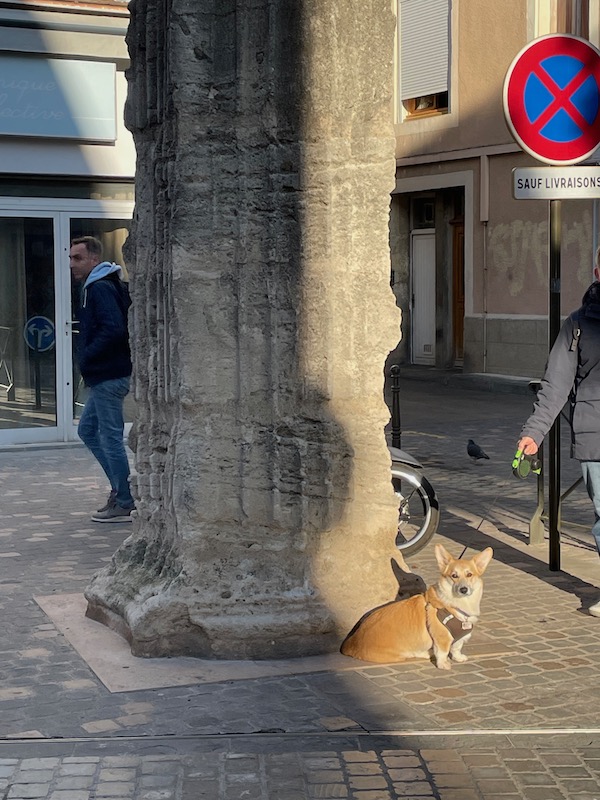
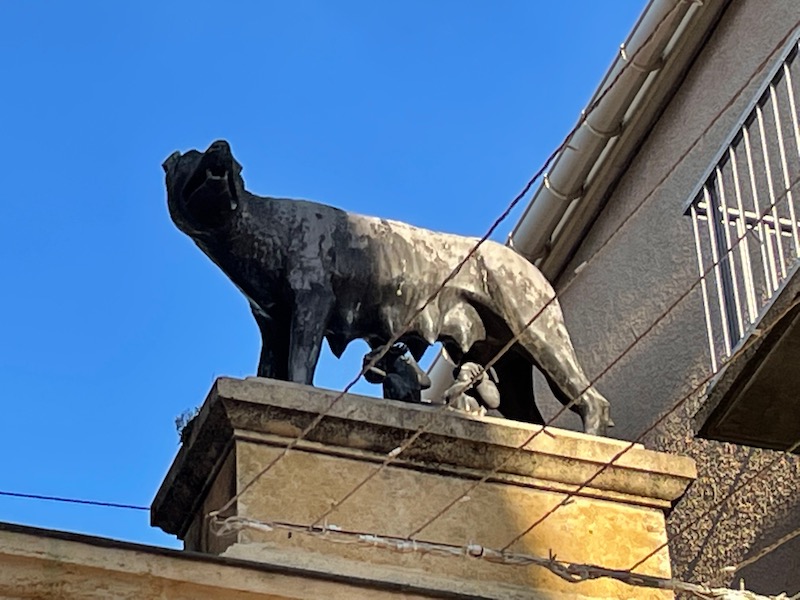
Christmas going up
